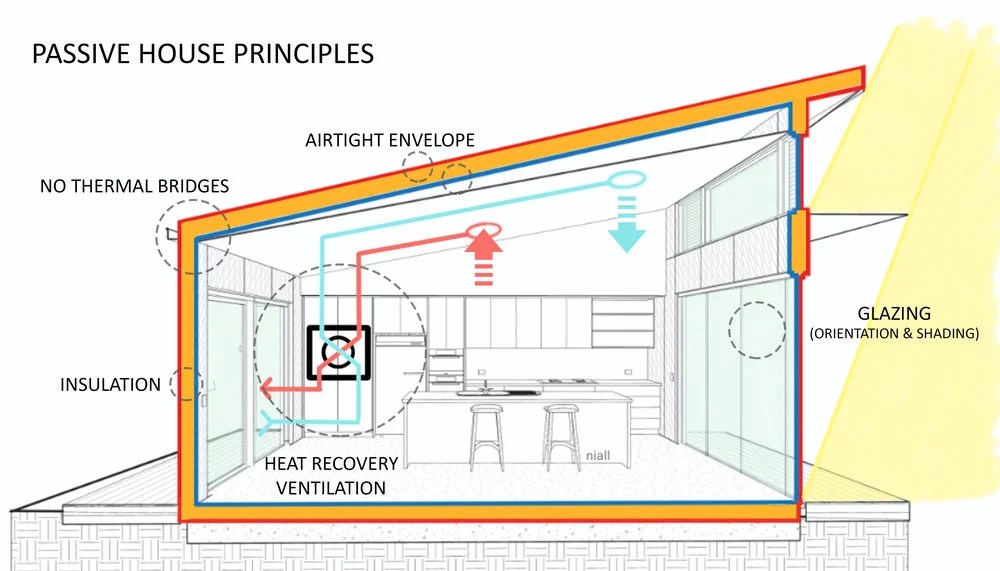The term “passive design” refers to a kind of architecture that makes use of the weather to keep a suitable temperature range in the dwelling. Passive design minimizes or eliminates the need for supplemental heating or cooling, which accounts for around 40% of energy usage in the average Australian home (or considerably more in some regions).
It is impossible to overestimate the value of passive design. Paying attention to the principles of excellent passive design that are appropriate for your climate effectively ‘locks in’ thermal comfort, low heating, and cooling expenses, and lower greenhouse gas emissions for the life of your home.
It’s based on natural energy sources
Natural sources of heating and cooling, such as the sun and cooling breezes, are used in passive architecture. It is accomplished by properly orienting your structure on its location and planning the building envelope with care (roof, walls, windows, and floors of a home). Building envelopes that are well-designed reduce unnecessary heat intake and loss.
When planning and building a home, the most cost-effective period to achieve optimal passive design is when it is first being designed and built. Significant modifications to an existing house, on the other hand, may be a cost-effective way to increase thermal comfort – even modest changes can make a big difference. If you’re buying a new house or apartment, think about how well it will keep you warm and how easily it can be updated to reflect excellent passive design principles in your climate.
It’s all about your preferences
For the greatest outcomes, ‘passive’ houses require ‘active’ users — those who have a basic grasp of how the home interacts with the daily and seasonal environment, such as when to open and close windows and how to operate the changeable shading.
A variety of interconnected techniques contribute to excellent passive design, each of which is the subject of a separate article in this area. Passive design techniques differ depending on the climate, as detailed in Design for Climate. The optimum combination of passive design methods is also dependent on the specific characteristics of your location. Choose a designer who is familiar with passive design for your environment, and consider hiring a thermal performance specialist to use thermal performance software to model alternative design choices.
To achieve a lifetime of thermal comfort, low energy costs, and minimal greenhouse gas emissions, good passive design is essential.

